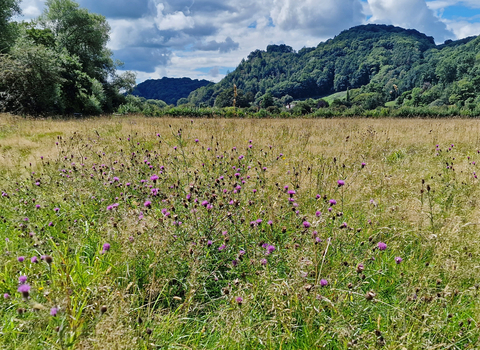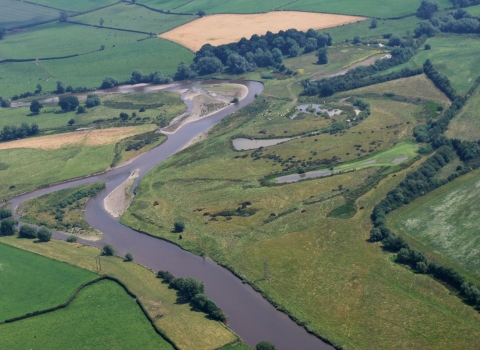NO PUBLIC ACCESS - this site is for wildlife

Bluebells & Greater Stitchwort at Cwm y Wydden Nature Reserve © MWT/Tammy Stretton

Wood Warbler (Phylloscopus sibilatrix) in sessile oak forest Wales © Andy Rouse/2020VISION
Know before you go
Dogs
When to visit
Opening times
NO PUBLIC ACCESSBest time to visit
NO PUBLIC ACCESSAbout the reserve
Cwm y Wydden is a small area of ancient woodland supporting a great diversity of wildlife. The wood scrambles up steep slopes, either side of a small stream, like a jungle in miniature - a real Welsh rainforest!
Areas of reduced light and increased humidity encourage a wealth of ferns, lichens, moss and liverworts. Sessile Oak, birch and Hazel provide most of the tree cover. Breaks in the canopy let enough light in for spring flowering woodland plants like Bluebell, Common Dog-violet, Primrose and Wood Anemone, in some areas, whilst Bilberry and Common Cow-wheat carpet the floor elsewhere.
Responding to this diversity are the myriad of animals, including iconic spring migrants like Pied Flycatcher and Wood Warbler. The real abundance shows in the large number of different insects and other invertebrates living there, well over 400 of them! The Purple Hairstreak butterfly is one such species, an oak feeding species, rarely seen. But it is the invertebrates associated with the dead wood which are really special. Of particular note is a tiny fly, known only as Pseudopomyza atrimana, which is a nationally rare, endangered species only found at 5 sites in the whole of the UK; Cwm y Wydden is it's only known Welsh site.
Cwm y Wydden Nature Reserve is a site for wildlife - there is no public access. Steep slopes, difficult terrain and abundant deadwood make the site too dangerous.



